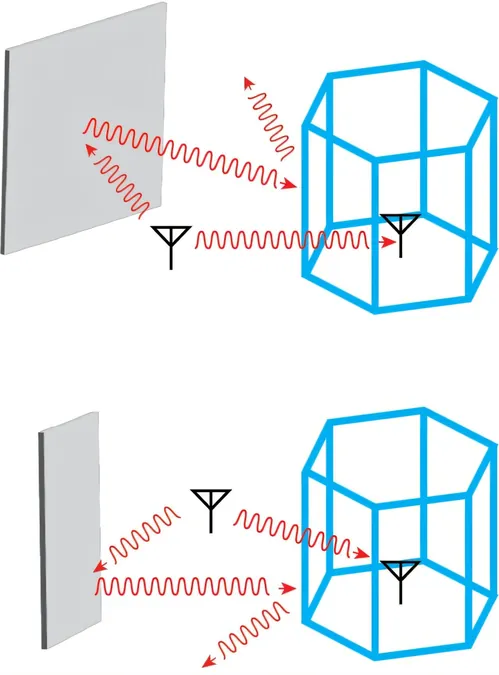
Revolutionary Smart Surfaces Challenge Multipath Signal Interference in Wireless Communications
2025-04-28
Author: Wei
The Wireless Evolution: A Double-Edged Sword
As technology propels us into a hyper-connected future, the evolution of wireless communications and miniaturized electrical circuits have become cornerstones of our digital existence. However, this advancement comes with its own set of challenges, particularly in the form of multipath propagation—a phenomenon where a single radio signal reaches receiving antennas via multiple paths, often resulting in delayed and distorted signals.
The Troublesome Impact of Multipath Interference
Multipath interference manifests in various frustrating ways, from annoying ghost images on TV to diminished signal quality in wireless communications. With our systems becoming increasingly reliant on high-frequency signals, engineers are tasked with tackling a persistent issue that undermines reliability.
Two Physical Challenges Stemming from Multipath Signals
Traditionally, addressing multipath interference has been thwarted by two fundamental challenges. Firstly, multiple signals operate on the same frequency as the primary signal, rendering conventional frequency-based filtering techniques ineffective. Secondly, the unpredictable angles at which these signals arrive complicate matters further. This has made passive solutions particularly arduous, as traditional materials remain locked to consistent scattering profiles.
Meet the Groundbreaking Solution from Japan
In light of these challenges, a research team led by Associate Professor Hiroki Wakatsuchi from Nagoya Institute of Technology, Japan, has embarked on an innovative journey to redefine how we approach multipath interference. Their groundbreaking research, recently published in Physical Review Letters, showcases a passive metasurface filtering system that shatters existing constraints.
This ingenious design employs metasurface panels with internal circuit elements, including metal-oxide-semiconductor field-effect transistors (MOSFETs). The result? A filtering system that allows the very first incoming wave to pass through while effectively rejecting delayed signals coming from other angles—all without needing external power sources.
How Does It Work? A Deep Dive into the Mechanics
The brilliance of this system lies in its ability to create a time-varying response without active components. Each cell on the metasurface functions as a dynamic switch powered by MOSFET technology. As the first signal arrives, it energizes the panel's resonance, ensuring a strong transmission, while also reconfiguring the internal circuits of other unit cells to strategically block subsequent signals from differing angles.
Promising Results from Pioneering Experiments
This method has been validated through simulations and real-world experiments using a unique hexagonal prism structure. Test runs demonstrated an impressive 10 dB increase in the strength of the first incoming signal, while efficiently suppressing other waves regardless of their directional approach.
A New Era of Passive Filtering
Wakatsuchi emphasizes that this pioneering filtering design is fundamentally different from previous methods. Its advantages include minimizing complex calculations and eliminating the need for heavy modulation circuits, making it an exceptional fit for low-cost applications like IoT devices.
What makes this innovation even more appealing is its independence from direct current energy sources, a major leap forward compared to existing adaptive arrays.
Future Implications: A Wave of Possibilities
Looking ahead, this interlocking strategy holds the potential to revolutionize not just multipath solutions, but the broader landscape of wireless communication. By controlling various types of electromagnetic devices autonomously, we could usher in a new era of applications ranging from antennas to sensors and beyond.
Wakatsuchi concludes, "Our passive filter could pave the way for a new generation of radio-frequency devices. This strategy is particularly beneficial for low-cost communication tools unable to utilize traditional signal-processing methods due to limited computational capacity. As we continue to innovate, the future of wireless technology seems increasingly bright and interconnected."
Embracing an Interconnected Future
As researchers refine these technologies, we draw closer to a world fully integrated by advanced wireless communication, making previously unimaginable possibilities a reality.

 Brasil (PT)
Brasil (PT)
 Canada (EN)
Canada (EN)
 Chile (ES)
Chile (ES)
 Česko (CS)
Česko (CS)
 대한민국 (KO)
대한민국 (KO)
 España (ES)
España (ES)
 France (FR)
France (FR)
 Hong Kong (EN)
Hong Kong (EN)
 Italia (IT)
Italia (IT)
 日本 (JA)
日本 (JA)
 Magyarország (HU)
Magyarország (HU)
 Norge (NO)
Norge (NO)
 Polska (PL)
Polska (PL)
 Schweiz (DE)
Schweiz (DE)
 Singapore (EN)
Singapore (EN)
 Sverige (SV)
Sverige (SV)
 Suomi (FI)
Suomi (FI)
 Türkiye (TR)
Türkiye (TR)
 الإمارات العربية المتحدة (AR)
الإمارات العربية المتحدة (AR)